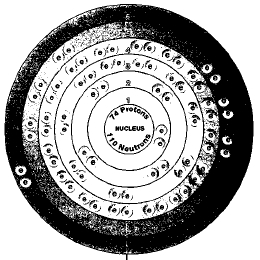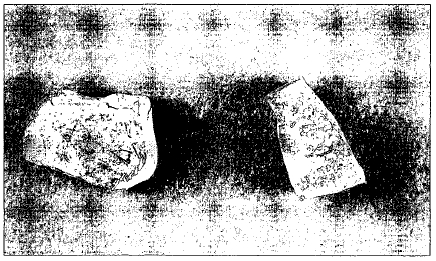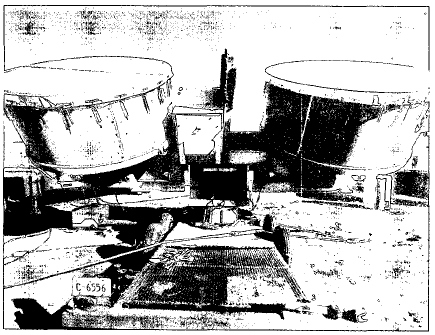TUNGSTEN


Overview
Tungsten is a transition metal. The transition metals are a group of elements found in the middle of the periodic table. They occupy the boxes in Rows 4 through 7 between Groups 2 and 13. The periodic table is a chart that shows how chemical elements are related to one another.
These metals have very similar physical and chemical properties. One of tungsten's unusual properties is its very high melting point of 3,410°C (6,170°F). This is the highest melting point of any metal. Another of its important properties is its ability to retain its strength at very high temperatures. These properties account for tungsten's primary application, the manufacture of alloys. An alloy is made by melting and mixing two or more metals. The mixture has properties different from those of the individual metals.
SYMBOL
W
ATOMIC NUMBER
74
ATOMIC MASS
183.85
FAMILY
Group 6 (VIB)
Transition metal
PRONUNCIATION
TUNG-stun
Credit for the discovery of tungsten is often divided among three men—Spanish scientists Don Fausto D'Elhuyard (1755-1833) and his brother Don Juan Jose D'Elhuyard (1754-96), and Swedish chemist Carl Wilhelm Scheele (1742-86). Tungsten's chemical symbol, W, is taken from an alternative name for the element, wolfram.
Discovery and naming
The first mention of tungsten and its compounds can be traced to about 1761. German chemist Johann Gottlob Lehmann (1719-67) was studying a mineral known as wolframite. He found two new substances in the mineral but did not recognize that they were new elements.
About twenty years later, Scheele also studied this mineral. He produced from it a white acidic powder. Scheele knew the powder was a new substance. But he could not isolate a pure element from it. Scheele's discovery was actually tungstic acid (H 2 WO 4 ). (See sidebar on Scheele in the chlorine entry in Volume 1.)
Tungsten metal was prepared for the first time in 1783 by the D'Elhuyard brothers. In 1777, they were sent to Sweden to study mineralogy. After their return to Spain, the brothers worked together on a number of projects. One project involved an analysis of wolframite. They produced tungstic acid like Scheele but went one step further. They found a way to obtain pure tungsten metal from the acid. For this work, they are generally given credit as the discoverers of tungsten.
The name tungsten is taken from the Swedish phrase that means "heavy stone." In some parts of the world, the element is still called by another name, wolfram. This name comes from the German expression Wolf rahm, or "wolf froth (foam)." The element's chemical symbol is taken from the German name rather than the Swedish name.
Physical properties
Tungsten is a hard brittle solid whose color ranges from steel-gray to nearly white. Its melting point is the highest of any metal, 3,410°C (6,170°F) and its boiling point is about 5,900°C (10,600°F). Its density is about 19.3 grams per cubic centimeter. Tungsten conducts electrical current very well.
Chemical properties
Tungsten is a relatively inactive metal. It does not combine with oxygen at room temperatures. It does corrode (rust) at temperatures above 400°C (700°F. It does not react very readily with acids, although it does dissolve in nitric acid or aqua regia. Aqua regia is a mixture of hydrochloric and nitric

Occurrence in nature
Tungsten never occurs as a free element in nature. Its most common ores are the minerals scheelite, or calcium tungstate (CaWO 4 ) and wolframite, or iron manganese tungstate (Fe,MnWO 4 ). The abundance of tungsten in the Earth's crust is thought to be about 1.5 parts per million. It is one of the more rare elements.
The largest producers of tungsten in the world are China, Russia, and Portugal. No tungsten was mined in the United States in 1996. Detailed information about the production and use of tungsten in the United States is not available. This information is withheld from the public to protect the companies that produce and use tungsten.
In some parts or the world, tungsten is still called by another name, wolfram. This name comes from the German expression Wolf rahm, or "wolf froth (foam)."
Isotopes
Five naturally occurring isotopes of tungsten exist. They are tungsten-180, tungsten-182, tungsten-183, ungsten-184, and tungsten-186. Isotopes are two or more forms of an element. Isotopes differ from each other according to their mass number. The number written to the right of the element's name is the mass number. The mass number represents the number of protons plus neutrons in the nucleus of an atom of the element. The number of protons determines the element, but the number of neutrons in the atom of any one element can vary. Each variation is an isotope.
About a dozen radioactive isotopes of tungsten are known also. A radioactive isotope is one that breaks apart and gives off some form of radiation. Radioactive isotopes are produced when very small particles are fired at atoms. These particles stick in the atoms and make them radioactive.
None of the radioactive isotopes of tungsten has any important commercial use.
Extraction
Tungsten metal can be obtained by heating tungsten oxide (WO
3
) with
aluminum:
It also results from passing
hydrogen
gas over hot tungstic acid (H
2
WO
4
):
Uses
By far the most important use of tungsten is in making alloys. Tungsten is used to increase the hardness, strength, elasticity (flexibility), and tensile strength (ability to stretch) of steels. The metal is usually prepared in one of two forms. Ferrotungsten is an alloy of iron and tungsten. It usually contains about 70 to 80 percent tungsten. Ferrotungsten is mixed with other metals and alloys (usually steel) to make specialized alloys. Tungsten is also produced in powdered form. It can then be added to other metals to make alloys.
About 90 percent of all tungsten alloys are used in mining, construction, and electrical and metalworking machinery.
About 90 percent of all tungsten alloys are used in mining, construction, and electrical and metal-working machinery. These alloys are used to make high-speed tools; heating elements in furnaces; parts for aircraft and spacecraft; equipment used in radio, television, and radar; rock drills; metal-cutting tools; and similar equipment.

A small, but very important, amount of tungsten is used to make incandescent lights. The very thin metal wire that makes up the filament in these lights is made of tungsten. An electric current passes through the wire, causing it to get hot and give off light. It does not melt because of the high melting point of tungsten.
Compounds
Probably the most important compound of tungsten is tungsten carbide (WC). Tungsten carbide has a very high melting point of 2,780°C (5,000°F). It is the strongest structural material. It is used to make parts for electrical circuits, cutting tools, cermets, and cemented carbide. A cermet is a material made of a ceramic and a metal. A ceramic is a clay-like material. Cermets are used where very high temperatures occur for long periods of time. For example, the parts of a rocket motor or a jet engine may be made from a cermet.
A cemented carbide is made by bonding tungsten carbide to another metal. The product is very strong and remains strong at high temperatures. Cemented carbides are used for rock and metal cutting. They can operate at 100 times the speed of similar tools made of steel.
Health effects
Tungsten has no essential role in the health of plants, humans, or animals. In moderate amounts, it also presents virtually no health danger.